Who knew that there could be so many different types of helpful knee high doc compression clothing to wear? Aside from your normal day-to-day work hoses, your athletic socks, and your comfy home hoses, there are also ortho compression socks.
Ortho Pressure Socks
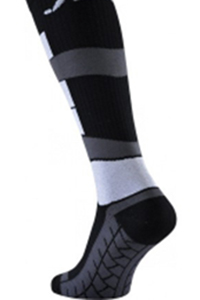
Ortho compression hoses are a specially made type of stocking to help individuals with diabetes. These specific hoses are most effective for individuals dealing with edema. Edema is when your legs and feet swell. The swelling is usually caused by a variety of diseases, and ortho compression hoses can provide relief to the individuals who are dealing with these illnesses and the edema they cause.
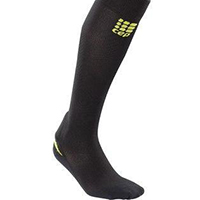
Why Do I Need 20 to 30 mmHg Hoses?
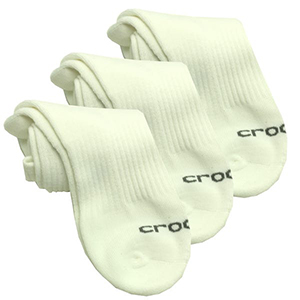
While many people may not need ortho stockings, people who have diabetes will definitely want ortho compression hoses. Ortho compression hoses help to protect your feet in several ways. Ortho compression socks are made from a fabric that helps keep moisture away. The fabric also helps prevent individuals from getting ulcers on their legs. By lightly hugging the leg, ortho compression socks help promote circulation without constricting blood flow. Ortho compression socks also have a microbial layer to help keep any injuries or skin tags clean. Because they have extra padding, ortho compression socks help keep individuals battling edema comfortable when they are walking. They’re also soft – always a plus when your feet and legs may be uncomfortable. Ortho compression socks are designed so that diabetics can be on their feet and still accomplish their day to day tasks without being in pain or compromising their health.
Benefits of These Pressure Hoses
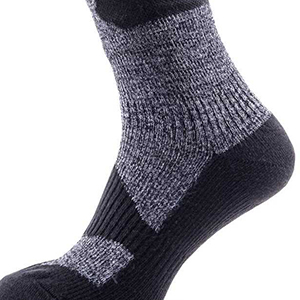
Ortho compression socks are primarily beneficial for diabetics. They provide a less constricting space, allowing circulation to still occur when your lower legs and feet are swollen. By allowing circulation to continue, ortho compression socks help individuals avoid numbness in their feet, a common issue for those diagnosed with diabetes. The softness and padding of ortho compression socks also serve as a protective layer against potential injuries. Ortho compression socks also help keep feet dry and comfortable. The fabric keeps feet dry by pulling moisture away, which also aids in identifying any drainage that could be occurring from previous wounds. The numbness that diabetics typically experience can prevent that identification, making this a major benefit of ortho stockings.

Compression Socks
Like ortho compression socks, 10 mmHg to 15 mmHg, 15 mmHg to 20 mmHg, or 20 mmHg to 30 mmHg knee high compression socks also aid in circulation. However, compression socks aid in circulation by gently compressing the foot from the toes all the way up to the knees -and sometimes all the way up to the thighs. This gradual compression aids in circulation and prevents blood from pooling and blood clots from forming. The 10 mmHg to 15 mmHg, 15 mmHg to 20 mmHg, or 20 mmHg to 30 mmHg knee high compression socks also help provide relief from joint pain, varicose veins, ulcers or skin tags, and deep vein thrombosis. This relief can help those diagnosed with some forms of diabetes, but not all types.
20-30mmHG Pressure Hoses
20 – 30 mmHg is the basic size and type recommended for most individuals. This is the middle firmness of all types of firmness in compression socks. At the low end, there are 10 mmHg, and at the high end are compression socks at a firmness that needs to be prescribed. The middle firmness provides enough compression to aid with edema, but not enough compression to aid with severe varicose veins or thrombosis. The 10 mmHg level is good for providing joint pain relief, and the 30 – 40 mmHg helps with providing more support for those dealing with varicose veins or thrombosis. Prescription compression socks help with severe forms of varicose veins and thrombosis.
Why Compression Socks?
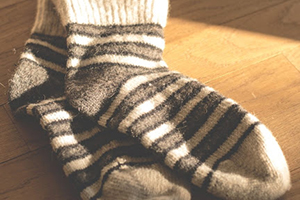
Compression socks (10 mmHg to 15 mmHg, 15 mmHg to 20 mmHg, or 20 mmHg to 30 mmHg) are a good option for people who find themselves standing or sitting a lot, as well as for people who need to be on bed rest following pregnancy or surgery. Athletes may also find that the aid in circulation provided by compression socks helps with sports activities as well. Knee high or thigh high 10 mmHg to 15 mmHg, 15 mmHg to 20 mmHg, or 20 mmHg to 30 mmHg compression socks also provide added support for those managing joint pain or any leg pain. Everyone and anyone can use compression socks. Among those who can frequently be found using compression socks are nurses, pilots, pregnant women, and doctors.
Benefits of Compression Socks
There are many benefits of 10 mmHg to 15 mmHg, 15 mmHg to 20 mmHg, or 20 mmHg to 30 mmHg compression socks:
- Pain Management: Compression socks provide individuals with relief from joint pain associated with restricted circulation, and pain from standing for long periods of time.
- Increased Circulation: Compression socks provide increased circulation by providing increased compression from your toes to your knees.
- Prevention/ Treating of Varicose Veins: Compression socks help with the prevention of varicose veins by providing compression to keep the veins from popping due to strain put on your legs.
- Prevention/Treating of Edema: Compression helps to reduce edema, which is the swelling of the legs.
- Prevention/Treating of Deep Vein Thrombosis: This is a diagnosis that can range from mild to severe. Compression socks help to ensure that Deep Vein Thrombosis stays under control while treating the issues that can lead to DVT.
Ortho Pressure Socks vs Compression Socks
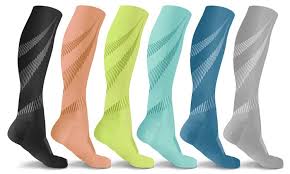
The main difference between knee high ortho compression socks and thigh high compression socks is what ortho compression socks provide that compression socks don’t. Thigh high and knee high ortho compression socks are made of a material that helps people keep their legs and feet dry and warm. This material is also softer, helping with the prevention of ulcers or skin bruises. While 10 mmHg to 15 mmHg, 15 mmHg to 20 mmHg, or 20 mmHg to 30 mmHg knee high compression socks also prevent ulcers and bruising, they do compress more than the knee high or thigh high ortho compression socks do, and this is not an ideal situation for an individual with diabetes. Thigh high, knee high and ankle high ortho compression socks are made with less elastic than compression socks are, and may not be made with any elastic at all.
What are They Made Of?
Knee high, thigh high, and ankle high ortho compression socks are also made with antimicrobial material, which compression socks do not have. As a result, ankle high, thigh high, and knee high ortho compression socks help prevent infection if an individual gets hurt and doesn’t realize it. While both knee high, ankle high, and thigh high medical compression socks and ortho compression socks have some things in common. Knee high, thigh high, and ankle high ortho compression socks are geared towards individuals with diabetes.

Ortho Pressure Socks are the Best Pick for Diabetic People!

Out of all the options, knee high, thigh high, and ankle high ortho compression hosess are the best choice for those diagnosed with diabetes. They provide support for the legs when dealing with swelling (edema). Some also have fewer seams to prevent blisters or ulcers from forming on the leg. Ortho doc compression socks provide extra padding and warmth, as well as encourage dryness. Diabetics need extra padding due to the possibility of an unnoticed injury occurring. With numbness in the legs as a common result of diabetes, sometimes injuries are not felt and infections can happen. Ortho compression hoses provide that support, giving you one less thing to worry about as you go about your day. While compression socks do help in similar ways as ortho compression hoses, the ortho compression hoses provide the all-encompassing answer to edema and diabetes.
Footwear Selection
The benefits of either 10 mmHg to 15 mmHg, 15 mmHg to 20 mmHg, or 20 mmHg to 30 mmHg knee high compression hoses will be realized with the appropriate shoes. Usually, properly-fitting shoes with a broad toe box help to prevent foot injuries, such as swelling and blisters. Shoes should be checked before putting them on to ensure they have intact lining. Loose fitting shoes and foreign objects in the shoes might cause injury. We strongly urge you to avoid walking with the knee high 20 mmHg to 30 mmHg compression clothing without shoes. Diabetic people are more prone to friction and shear when walking, which may lead to forefoot calluses over a given time duration. To reduce the incidence of forefoot calluses, we encourage you to avoid wearing shoes with a heel height that exceeds one-inch in measurement. Also, we suggest that you consider wearing 10 mmHg to 15 mmHg, 15 mmHg to 20 mmHg, or 20 mmHg to 30 mmHg knee high compression hoses, especially 20 mmHg to 30 mmHg ortho compression socks. These knee high or thigh high compression socks are also referred to as diabetic socks. But you must know that this type of socks feature thicker insoles than standard socks. You should also consider choosing diabetic socks that are infused with silver. However, there is no conclusive evidence that indicates major benefits of silver infusion. It is also advisable to look for knee high or thigh high compression socks that are infused with copper. This material helps with moisture wicking. It also promotes blood cell, connective tissue, and skin development.
Factors to Consider
You should consider the following, in your selection of the best knee high or thigh high compression ortho compression socks
- Non-binding uppers
- Functional soles
- Stretchable uppers
- Multiple widths
- Orthotic support
- Deep toe box
- Extra depth design
- Seamless design
- Anti-microbial
- Warmth
- No-constricting
- Comfortable padding
Where Can I Buy Ortho Pressure Socks?
Comprogear offers compression socks, and as part of their mission, they provide you with all the resources needed to get the right socks for you. If one of their socks isn’t the best fit for your needs, they list multiple affiliates who can help you find the right socks for you at no extra cost to you. You can get the following at ComproGear:
This page last updated January 7, 2022
